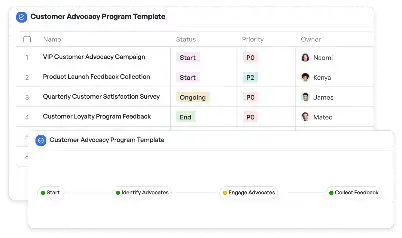Labeling Tool Configuration Management
Achieve project success with the Labeling Tool Configuration Management today!

What is Labeling Tool Configuration Management?
Labeling Tool Configuration Management refers to the systematic process of setting up, customizing, and managing tools used for labeling data in various industries. This process is critical in fields like machine learning, where accurate data labeling is essential for training AI models. For instance, in autonomous vehicle development, labeling tools are configured to identify objects like pedestrians, vehicles, and traffic signs in images or videos. The importance of Labeling Tool Configuration Management lies in its ability to ensure consistency, accuracy, and efficiency in data labeling tasks, which directly impacts the quality of the end product. By leveraging advanced configuration options, teams can tailor labeling tools to meet specific project requirements, streamline workflows, and reduce errors.
Try this template now
Who is this Labeling Tool Configuration Management Template for?
This Labeling Tool Configuration Management template is designed for professionals and teams involved in data labeling and annotation tasks. Typical users include data scientists, machine learning engineers, project managers, and quality assurance specialists. For example, a data scientist working on a healthcare AI project might use this template to configure a labeling tool for annotating medical images. Similarly, a project manager overseeing an e-commerce platform could utilize the template to set up a workflow for categorizing product images. The template is also ideal for startups and enterprises looking to standardize their labeling processes across multiple projects, ensuring scalability and consistency.

Try this template now
Why use this Labeling Tool Configuration Management?
The primary advantage of using this Labeling Tool Configuration Management template is its ability to address specific pain points in the data labeling process. For instance, one common challenge is the lack of standardization in labeling workflows, which can lead to inconsistencies and errors. This template provides a structured approach to configuring tools, ensuring uniformity across projects. Another issue is the time-consuming nature of manual tool setup, which this template mitigates by offering pre-defined configurations tailored to various industries. Additionally, the template includes features for quality control and validation, helping teams identify and rectify errors early in the process. By addressing these challenges, the template not only enhances the accuracy and efficiency of data labeling but also supports better decision-making and project outcomes.

Try this template now
Get Started with the Labeling Tool Configuration Management
Follow these simple steps to get started with Meegle templates:
1. Click 'Get this Free Template Now' to sign up for Meegle.
2. After signing up, you will be redirected to the Labeling Tool Configuration Management. Click 'Use this Template' to create a version of this template in your workspace.
3. Customize the workflow and fields of the template to suit your specific needs.
4. Start using the template and experience the full potential of Meegle!
Try this template now
Free forever for teams up to 20!
The world’s #1 visualized project management tool
Powered by the next gen visual workflow engine




